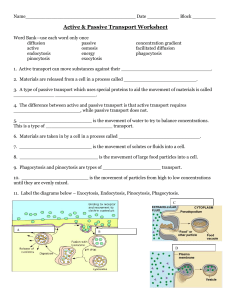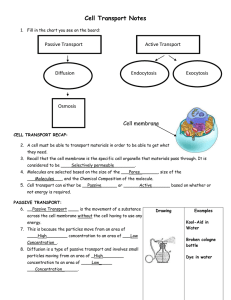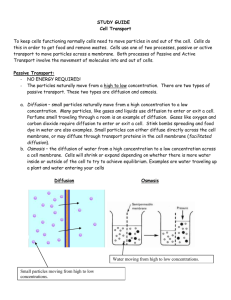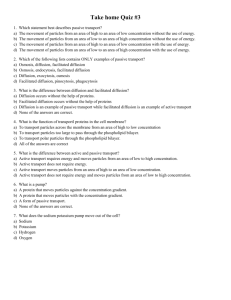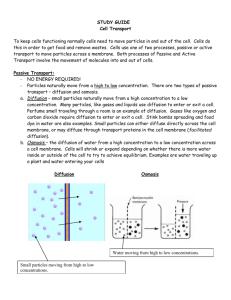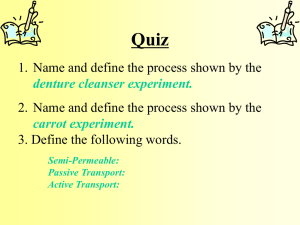Cell Transport Notes
advertisement
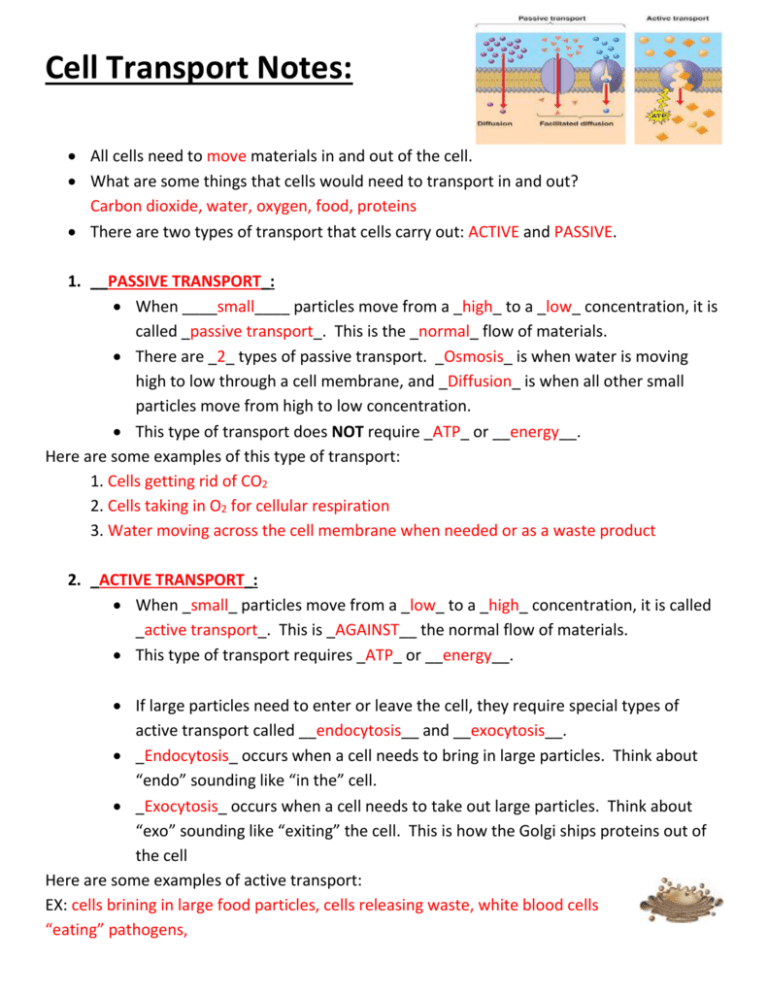
Cell Transport Notes: All cells need to move materials in and out of the cell. What are some things that cells would need to transport in and out? Carbon dioxide, water, oxygen, food, proteins There are two types of transport that cells carry out: ACTIVE and PASSIVE. 1. __PASSIVE TRANSPORT_: When ____small____ particles move from a _high_ to a _low_ concentration, it is called _passive transport_. This is the _normal_ flow of materials. There are _2_ types of passive transport. _Osmosis_ is when water is moving high to low through a cell membrane, and _Diffusion_ is when all other small particles move from high to low concentration. This type of transport does NOT require _ATP_ or __energy__. Here are some examples of this type of transport: 1. Cells getting rid of CO2 2. Cells taking in O2 for cellular respiration 3. Water moving across the cell membrane when needed or as a waste product 2. _ACTIVE TRANSPORT_: When _small_ particles move from a _low_ to a _high_ concentration, it is called _active transport_. This is _AGAINST__ the normal flow of materials. This type of transport requires _ATP_ or __energy__. If large particles need to enter or leave the cell, they require special types of active transport called __endocytosis__ and __exocytosis__. _Endocytosis_ occurs when a cell needs to bring in large particles. Think about “endo” sounding like “in the” cell. _Exocytosis_ occurs when a cell needs to take out large particles. Think about “exo” sounding like “exiting” the cell. This is how the Golgi ships proteins out of the cell Here are some examples of active transport: EX: cells brining in large food particles, cells releasing waste, white blood cells “eating” pathogens, Illustrations show cell transport Passive Transport- 2 types of passive transport, small particles moving from high to low concentration: Diffusion Osmosis Active Transport- 3 types of active transport, small particles moving from low to high concentration, endocytosis and exocytosis: Active Transport Endocytosis Exocytosis

